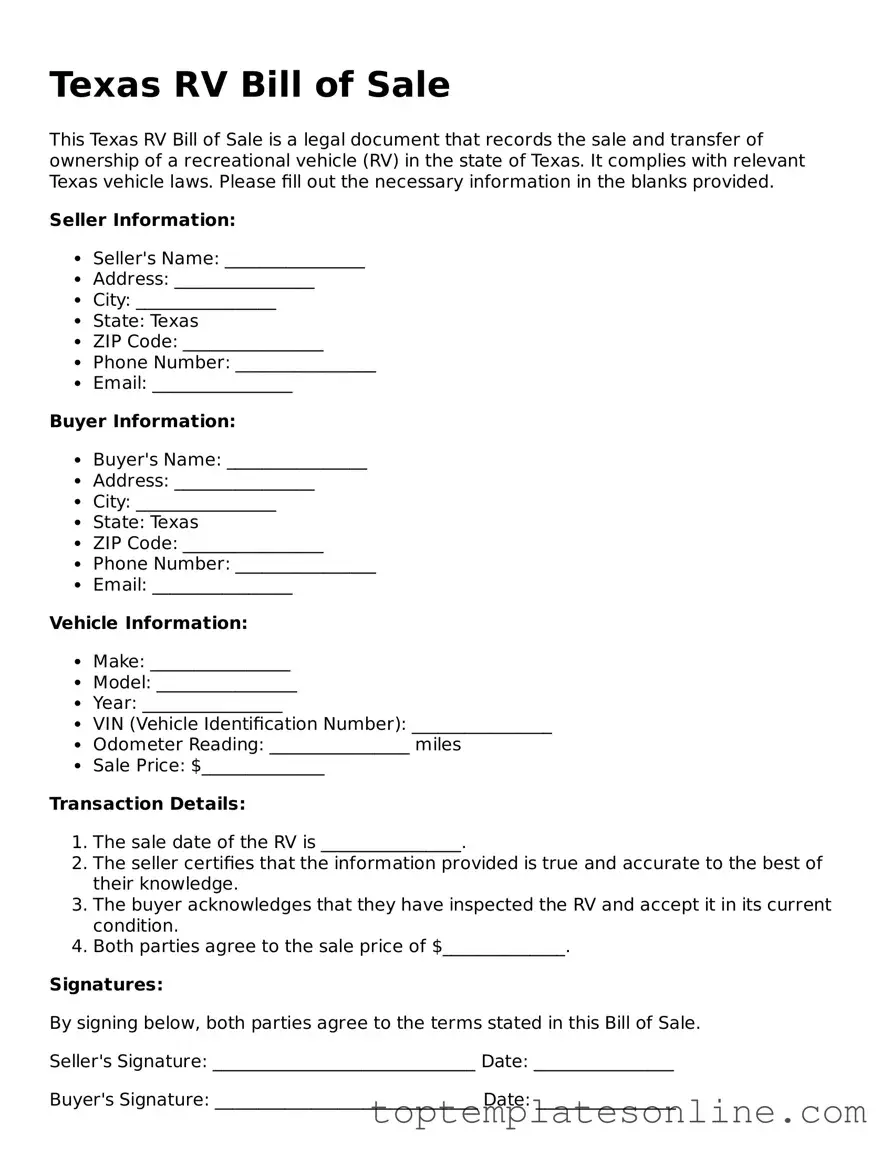Blank RV Bill of Sale Template for Texas State
The Texas RV Bill of Sale form is a legal document that records the sale and transfer of ownership of a recreational vehicle in Texas. This form serves as proof of the transaction between the buyer and seller, detailing important information such as the vehicle's identification number, sale price, and the parties involved. Properly completing this document is essential for ensuring a smooth transfer of ownership and for future registration purposes.
Customize RV Bill of Sale Here
